JANUARY 2020
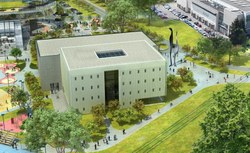 Construction work begins on two new university buildings
Construction work begins on two new university buildings
During January, construction work will begin on two new university buildings in Ostrava at a total cost of around CZK 1 billion. The buildings will be located near the Černá Louka (Black Meadow) site in the city centre. The City of Ostrava has offered strong practical support to the project, donating the land and building an underground parking garage.
The new complex for the University of Ostrava will be built by a consortium of two companies that won the tender – the Ostrava branch of IMOS Brno and Třinec-based Beskydské stavební. The buildings will house a new sports centre and facilities for teaching art and music.
Ostrava’s Mayor Tomáš Macura explained why the City supports the project: “It’s essential for Ostrava to have first-class education facilities – not only for technical studies, but across all fields. This project is a response to that need. That’s why we’ve offered strong support to the project; we’ve pre-financed the project preparation phase, and we’ve also donated the land and carried out technical preparatory work, as well as building an underground parking garage which will form part of the complex and will serve both the university and the general public.”
The City of Ostrava will also carry out work to improve the area around the new university complex. The main focus will be on revitalizing the embankment of the Ostravice River, where the City will build a new zone for leisure and relaxation.
 Ostrava attracted a record number of tourists last year
Ostrava attracted a record number of tourists last year
Ostrava’s undisputed top two tourist attractions are the Lower Vítkovice area and the city’s zoo, which draw visitors not only from the Czech Republic, but also from abroad. Last year’s visitor numbers were again record-breaking.
During 2019, Ostrava’s zoo welcomed an all-time record number of visitors: 580 091 people. This was the fifth time in a row that the zoo broke the half-million barrier. During the entire period of the zoo’s existence, since its foundation in 1951, it has received over 21 million visitors.
Visitor numbers also continue to grow at the Lower Vítkovice complex, the jewel in the crown of Ostrava’s rich industrial heritage. Last year there were 19 500 more visitors than in 2018, with a total 1 675 000 people coming to Lower Vítkovice during 2019.
 MSIC – three years of supporting innovative businesses in Ostrava
MSIC – three years of supporting innovative businesses in Ostrava
Ostrava’s MSIC (Moravian-Silesian Innovation Centre) was founded in 2017. Its mission is to help small and medium enterprises (SMEs) to create innovative products and launch them on European or global markets. During its three years of existence, the MSIC has helped local businesses to implement over 300 projects.
The MSIC followed on from two decades of work by its predecessor, the Ostrava Science and Technology Park, by providing a range of innovation-related services to new start-ups as well as established businesses. These services are co-financed by the City of Ostrava and the Moravian-Silesian Region.
Since its foundation three years ago, the MSIC has helped more than 200 local businesses and entrepreneurs. More than half of these clients have made use of a programme which helps established companies to implement transformation projects by putting them in touch with a network of accredited experts who act as mentors. Other MSIC clients have made use of programmes helping businesses to employ senior citizens or supporting innovations via collaboration with experienced industrial designers. The MSIC’s portfolio of services complements the range of commercial services on the market, helping to improve the business and innovation environment in Ostrava and throughout the entire Region.
 Ostrava’s public transport system is phasing out paper tickets
Ostrava’s public transport system is phasing out paper tickets
Three and a half years ago, Ostrava’s public transport corporation (DPO) introduced a cashless payment system in all its vehicles. Passengers quickly got used to paying with contactless bank cards, and sales of paper tickets dropped to a third of their former level. This is one reason why the corporation has decided to become the first Czech public transport operator to go fully electronic, phasing out paper tickets entirely. The paper tickets were removed from sale on 1 January 2020, though it will still be possible to use old paper tickets until 31 March.
The corporation is confident that this step will help it to achieve cost savings of around 10 million CZK per year. It will also no longer be necessary to spend money on replacing the old paper ticket validation machines (the machines were installed 25 years ago, and are nearing the end of their service life). From 1 April 2020, all payments on Ostrava’s public transport network will be cashless. Passengers can either use the payment terminals located in the vehicles themselves, or they can use the MojeDPO app or buy SMS tickets. The entire system will be much more eco-friendly than the old paper tickets.
As part of its drive to achieve environmental improvements, Ostrava’s public transport corporation has also announced that all its diesel vehicles (buses) will be taken out of service within a year. The entire bus fleet will run on CNG (compressed natural gas) or electricity.
 New programme will help companies to launch their own research and development
New programme will help companies to launch their own research and development
The Czech Republic’s Technology Agency (TAČR), which is responsible for funding tech research, runs a programme called TREND supporting industrial research and experimental development.
At the beginning of December 2019, the agency announced a new call for applications to a sub-programme called “New Kids on the Block” (“Nováčci”). This part of the TREND programme is targeted at businesses which need to launch their own research and development activities. Applicants can receive up to 20 million CZK to support new R&D projects, with funding available to cover up to 80% of the total project costs. A total 120 million CZK is available as part of this sub-programme.
Successful applicants in the first call (whose results were announced in December 2019) included the Ostrava-based company IXPERTA, which is collaborating with the city’s VŠB Technical University on the research and development of a data collection system for railway vehicles, with simulator software generating data that trains the system to detect obstacles in simulated conditions. Funds from the “New Kids on the Block” programme have also gone to the University of Ostrava and Ostrava University Hospital, which will be partners in a project developing new laboratory tests to diagnose inflammation, sepsis and cardiovascular diseases.
The deadline for applications in the current call is 5 February 2020. For more information about the programme, see the Technology Agency’s website.
Source (photo: www.pixabay.com)
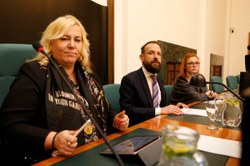 Process for building approval to be shortened and simplified
Process for building approval to be shortened and simplified
Regional Development Minister Klára Dostálová has begun a tour of Czech cities, where she will meet with mayors and officials to discuss and explain the government’s proposed amendments to building legislation. The new system will work on the principle of “one stamp, one office and one building”; it will substantially simplify the building approval process and shorten it to just one year. On 16 January Mrs. Dostálová visited Ostrava to meet with the city’s Mayor Tomáš Macura, Deputy Mayor Zuzana Bajgarová (whose area of responsibility includes investment projects) and other guests.
Mr. Macura commented on the visit: “I’m pleased that the Ministry has opened up a debate on the changes. Ostrava’s position is that we are very keen to see amendments to building legislation. We support the basic principles of the proposed amendments, and we will attempt to implement specific changes that we consider necessary. The new legislation will create a Supreme Building Authority, and we would like that new authority to be based in Ostrava; even though we are the third largest Czech city, no national-level authorities have their headquarters here.”
Mr. Macura also added that the new legislation should include provisions enabling city authorities to have a direct influence on their own territory, especially regarding the creation and approval of planning documentation, because each city is the best judge of its own needs.
 Municipal Studio for Urban Planning and Architecture is starting to address the first key areas for improvement
Municipal Studio for Urban Planning and Architecture is starting to address the first key areas for improvement
Ostrava’s Municipal Studio for Urban Planning and Architecture (known by its Czech abbreviation MAPPA) is starting to address the first key areas where improvements need to be made. The Director of this newly formed City organization, Ondřej Vysloužil, gave an interview to regional TV station Polar where he talked about his vision for the studio’s future. The main aim of MAPPA is to improve the quality of public spaces in Ostrava. The studio will work closely alongside various departments of its parent organization the City of Ostrava.
Mr. Vysloužil summed up MAPPA’s main areas of focus: “We will take over the activities of departments of the City Authority that were involved in communicating with the public on issues related to architecture and public space, planning and participating in architectural competitions, site surveying and preparing documentation for various projects.” He also emphasized the importance of Ostrava’s public space, which will become a key priority for MAPPA: “Architects are used to working with buildings or complexes of buildings, which they view from a bird’s-eye perspective. But in fact, the spaces between the buildings are much more important.”
MAPPA will address a number of major problem areas that Ostrava currently faces. The studio is currently focusing on the three most populous parts of the metropolitan area – the city centre (and Mariánské Hory), Poruba and Ostrava-Jih. Projects for the city centre currently include a transport system plan integrated with the planned redevelopment of the Černá Louka (Black Meadow) and Karolina areas. MAPPA will also be working on plans to improve connections between the city centre and Ostrava-Poruba.
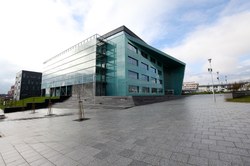 University campus will become a living lab
University campus will become a living lab
The VŠB-Technical University of Ostrava recently signed a Memorandum of Cooperation with T-Mobile. The first project implemented as part of this cooperation was launched soon afterwards. The university’s Poruba campus will become one of the company’s largest “living laboratories” used for testing digital services.
The university’s Rector Václav Snášel explained: “Our campus will become a simulator of an entire city – a smart city. At any one time there are between 10 and 15 thousand people moving around the campus, so it’s an ideal opportunity to test digital services. The core of the lab will be the 5G network; without that, it would not be possible to create such a system. Another key element is the computing capacity that’s necessary to simulate and optimize the individual steps in the digitalization process.”
The project will enable T-Mobile to share information on 5G technologies at the campus with the university, which will then use this information in other projects and when developing new technologies. Key research areas that will benefit from the project include robotics, autonomous vehicle testing, home care technologies and more. The network will become operational in the first half of 2020; the technologies will be supplied by Ericsson.
Source (photo: Faculty of Electrical Engineering and Computer Science, VŠB-Technical University of Ostrava)
Other news
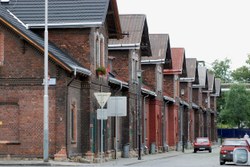 Moravian-Silesian Region wins prestigious tourism award
Moravian-Silesian Region wins prestigious tourism award
The project “Technology Route – Raw Beauty” has been awarded first prize in the category “Best Tourism Product” in the Tourism Grand Prix. The project was launched in 2012 to promote industrial heritage sites in the Moravian-Silesian Region, and it originally incorporated 12 sites. Since then, the route has been expanded to include 30 destinations, including several in Ostrava – Lower Vítkovice, Landek Park, the Michal coal mine, the historic workers’ housing schemes in Vítkovice and Slezská Ostrava, the slag-heaps of former mines, and more.
Organized by COT Media in collaboration with BVV Trade Fairs Brno, the Tourism Grand Prix competition has been held annually for the past thirteen years. The prize for the Technology Route project was accepted by the Deputy Regional Governor Jan Krkoška.
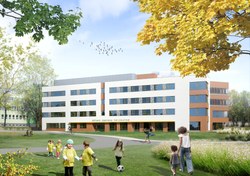 New building at Ostrava University Hospital
New building at Ostrava University Hospital
Long-awaited building work has begun on a new psychiatry centre at Ostrava University Hospital. Construction is scheduled to last around 18 months. The project will include three in-patient wards, ergotherapeutic workshops, three children’s psychiatry centres, and three psychology out-patient departments. The new building, designed by the architect Dita Nováková (Atelier Simona GROUP), is being paid for mainly from EU funds (85%); the remaining 15% will be funded from the national budget.
Attending the ceremonial launch of construction work, Health Minister Adam Vojtěch commented on the project: “The investment of more than 358 million CZK in the new psychiatry centre will enable the hospital to provide better quality of care for patients with mental illnesses. This is one of the Ministry’s main priorities; as part of our reforms of psychiatric care, we are not only boosting the role of community care, but also building new in-patient centres at hospitals for acute cases as well as modernizing existing facilities. The new psychiatry centre in Ostrava will be a teaching centre for medical students, and I am confident that it will help to improve teaching provision in this area.”
Source (incl. visualization)
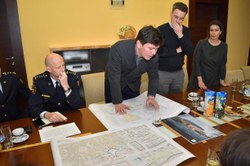 First coordination meeting for the new concert hall project
First coordination meeting for the new concert hall project
Last August, the City of Ostrava announced the winner of one of the most important architectural competitions in its entire history. The international competition to design a new concert hall complex took place over two rounds, and the jury of renowned experts took just under a year to find a winner: New York-based Steven Holl Architects in conjunction with the Architecture Acts studio.
On 16 January 2020 the first coordination meeting for the new concert hall project took place, attended by representatives of the City of Ostrava, the architects of the winning design, representatives of the Janáček Philharmonic Orchestra, the National Heritage Institute, and the fire service.
All stages of the project documentation are scheduled for completion in 2021. Building work should begin in 2022, and the new concert hall should be ready for opening in 2024.



